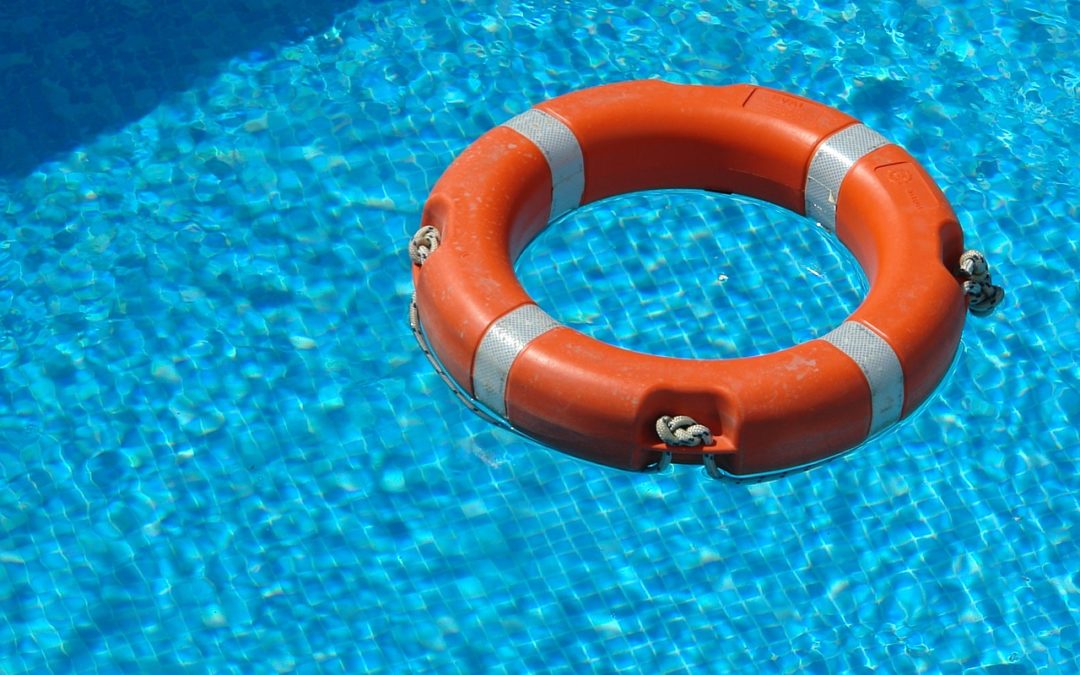AAP GIVES UPDATED ADVICE ON DROWNING PREVENTION
Before families head to the beach or pool this Memorial Day, the American Academy of Pediatrics (AAP) has updated guidance on water safety and drowning prevention. In its updated policy, the AAP has revised its guidance on swimming lessons and highlights new drowning risks – including large, inexpensive, portable and inflatable pools – that have emerged in the past few years.
Fortunately, drowning rates have fallen steadily from 2.68 per 100,000 in 1985 to 1.32 per 100,000 in 2006. But drowning continues to be the second leading cause of death for children ages 1 to 19, claiming the lives of roughly 1,100 children in 2006. Toddlers and teenaged boys are at greatest risk.
“To protect their children, parents need to think about layers of protection,” said Jeffrey Weiss, MD, FAAP, lead author of the policy statement and technical report, which will be published in the July print issue of Pediatrics and released early online May 24.
“Children need to learn to swim,” Dr. Weiss said. “But even advanced swimming skills cannot ‘drown-proof’ a child of any age. Parents must also closely supervise their children around water and know how to perform CPR. A four-sided fence around the pool is essential.”
A fence that completely surrounds the pool – isolating it from the house – can cut drowning risk in half. Unfortunately, laws regarding pool fencing may have dangerous loopholes. Large, inflatable above-ground pools can contain thousands of gallons of water and may even require filtration equipment, so they are left filled for weeks at a time. But because they are considered “portable,” these pools often are exempt from local building codes requiring pool fencing. From 2004 to 2006, the Consumer Product Safety Commission (CPSC) reported 47 deaths of children related to inflatable pools.
“Because some of these pools have soft sides, it is very easy for a child to lean over and fall headfirst into the water,” Dr. Weiss said. “These pools pose a constant danger.”
In the new policy, the AAP reinforces its existing recommendation that most children age 4 and older should learn to swim, but the AAP is now more open toward classes for younger children. In the past, the AAP advised against swimming lessons for children ages 1 to 3 because there was little evidence that lessons prevented drowning or resulted in better swim skills, and there was a concern parents would become less vigilant about supervising a child who had learned some swimming skills.
But new evidence shows that children ages 1 to 4 may be less likely to drown if they have had formal swimming instruction. The studies are small, and they don’t define what type of lessons work best, so the AAP is not recommending mandatory swim lessons for all children ages 1 to 4 at this time. Instead, the new guidance recommends that parents should decide whether to enroll an individual child in swim lessons based on the child’s frequency of exposure to water, emotional development, physical abilities, and certain health concerns related to pool water infections and pool chemicals.
“Not every child will be ready to learn to swim at the same age,” Dr. Weiss said. “Swimming lessons can be an important part of the overall protection, which should include pool barriers and constant, capable supervision.”
The AAP does not recommend formal water safety programs for children younger than 1 year of age. The water-survival skills programs for infants may make compelling videos for the Internet, but no scientific study has yet demonstrated these classes are effective, the policy states.
The updated policy also outlines the danger of body entrapment and hair entanglement in a pool or spa drain. Special drain covers and other devices that release the pressure in a drain can prevent such incidents.
AAP offers specific advice for parents:
- Never – even for a moment – leave small children alone or in the care of another young child while in bathtubs, pools, spas or wading pools, or near irrigation ditches or standing water. Bath seats cannot substitute for adult supervision. Empty water from buckets and other containers immediately after use. To prevent drowning in toilets, young children should not be left alone in the bathroom.
- Closely supervise children in and around water. With infants, toddlers and weak swimmers, an adult should be within an arm’s length. With older children and better swimmers, an adult should be focused on the child and not distracted by other activities.
- If children are in out-of-home child care, ask about exposure to water and the ratio of adults to children.
- If you have a pool, install a four-sided fence that is at least 4 feet high to limit access to the pool. The fence should be hard to climb (not chain-link) and have a self-latching, self-closing gate. Families may consider pool alarms and rigid pool covers as additional layers of protection, but neither can take the place of a fence.
- Children need to learn to swim. AAP supports swimming lessons for most children 4 years and older. Classes may reduce the risk of drowning in younger children as well, but because children develop at different rates, not all children will be ready to swim at the same age.
- Parents, caregivers and pool owners should learn CPR.
- Do not use air-filled swimming aids (such as inflatable arm bands) in place of life jackets. They can deflate and are not designed to keep swimmers safe.
- All children should wear a life jacket when riding in a boat. Small children and nonswimmers should also wear one at water’s edge, such as on a river bank or pier.
- Parents should know the depth of the water and any underwater hazards before allowing children to jump in. The first time you enter the water, jump feet first; don’t dive.
- When choosing an open body of water for children to swim in, select a site with lifeguards. Swimmers should know what to do in case of rip currents (swim parallel to the shore until out of the current, then swim back to the shore).
- Counsel teenagers about the increased risk of drowning when alcohol is involved.
Read more about pool safety.

